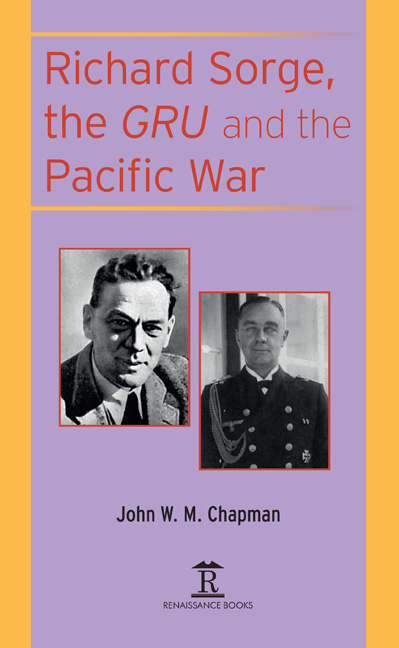Book contents
- Frontmatter
- Contents
- Chart: Organization of the People’s Commisariat for the Defence of the USSR,1941
- Preface
- Introduction
- Abbreviations
- List of Illustrations
- 1 ‘All is Not Well in the Camp of the Axis Powers’: Karl von Wiegand to Hearst Press, 20 November 1941
- 2 ‘In the Matter Affecting Ambassador Ott’
- 3 The Purge of German Journalists
- 4 ‘Expressions which are Psychologically Dangerous’: General Jodl to Admiral Wenneker 24.12.1942
- 5 The Bifurcation of Intelligence in Retrospect, 1929–1937
- 6 The Bifurcation of Intelligence in Retrospect, 1937–1941
- 7 Conclusions
- Select Bibliography
- Source Materials
- Index of Persons
- Index
- List of Contributors
5 - The Bifurcation of Intelligence in Retrospect, 1929–1937
Published online by Cambridge University Press: 05 October 2022
- Frontmatter
- Contents
- Chart: Organization of the People’s Commisariat for the Defence of the USSR,1941
- Preface
- Introduction
- Abbreviations
- List of Illustrations
- 1 ‘All is Not Well in the Camp of the Axis Powers’: Karl von Wiegand to Hearst Press, 20 November 1941
- 2 ‘In the Matter Affecting Ambassador Ott’
- 3 The Purge of German Journalists
- 4 ‘Expressions which are Psychologically Dangerous’: General Jodl to Admiral Wenneker 24.12.1942
- 5 The Bifurcation of Intelligence in Retrospect, 1929–1937
- 6 The Bifurcation of Intelligence in Retrospect, 1937–1941
- 7 Conclusions
- Select Bibliography
- Source Materials
- Index of Persons
- Index
- List of Contributors
Summary
AFTER SORGE SET out for his mission in China in 1929, Soviet foreign and defence policy had witnessed a leap forward in the form of the so-called Manchuli Incident when Soviet forces had been deployed across the border with Manchuria in order to seize back control of the Chinese Eastern Railway from the local warlord, Zhang Xue-liang. Although the dispute, in which Germany had been asked to act as mediator, demonstrated the effective results of Stalin's Five-Year Plan on the organisation of his military forces, perhaps much of the organisational success is attributable more to the lengthy period of military collaboration between Germany and the USSR in the Weimar era. This armed demonstration, however, promoted regional instability that was viewed with concern by the Japanese Kwantung Army and the Army General Staff in Tokyo; they had eyed Soviet moves in East Asia with growing hostility and impatience but had been constrained by the politicians and the Navy, following the withdrawal of Japanese forces from Siberia in 1923. Substantially, as a result of the onset of the Great Depression on trade between Japan and the USA, businessmen and politicians had joined in the Army's alarm and evidence began to indicate a growing desire to stage moves to combat any threats to Japanese interests, particularly in China. This was partially illustrated by the passage of legislation in the Diet of the Peace Preservation Law in 1925 and its steadily increasing application against socialists and communists from then until February 1941, when it was completely rewritten.
This was paralleled in Germany, which began to suffer from the impact of the steady withdrawal of US investment in the industrial economy as well as the decline of international trade, which was already constrained by the lack of convertibility in currencies. Military leaders who had promoted the covert cooperation with the USSR in the 1920s began questioning the wisdom of encouraging the huge scale of Soviet military developments when it became evident that, for example, the production of Soviet military aircraft had already reached in peacetime twice the levels of German production in World War I.
- Type
- Chapter
- Information
- Richard Sorge, the GRU and the Pacific War , pp. 57 - 73Publisher: Amsterdam University PressPrint publication year: 2020

